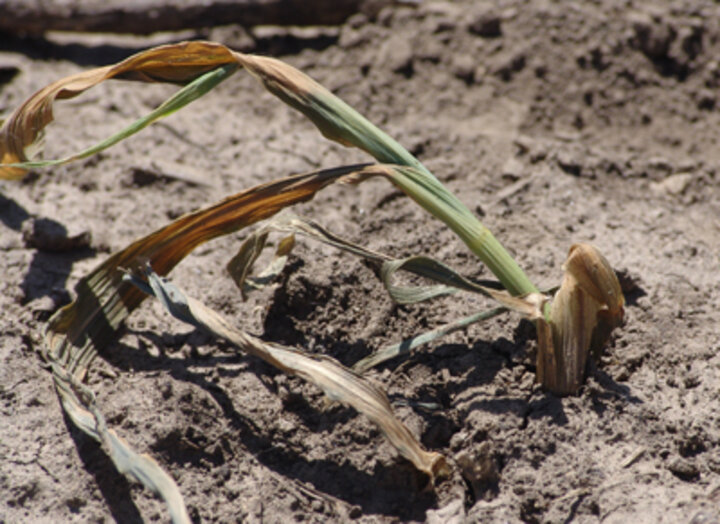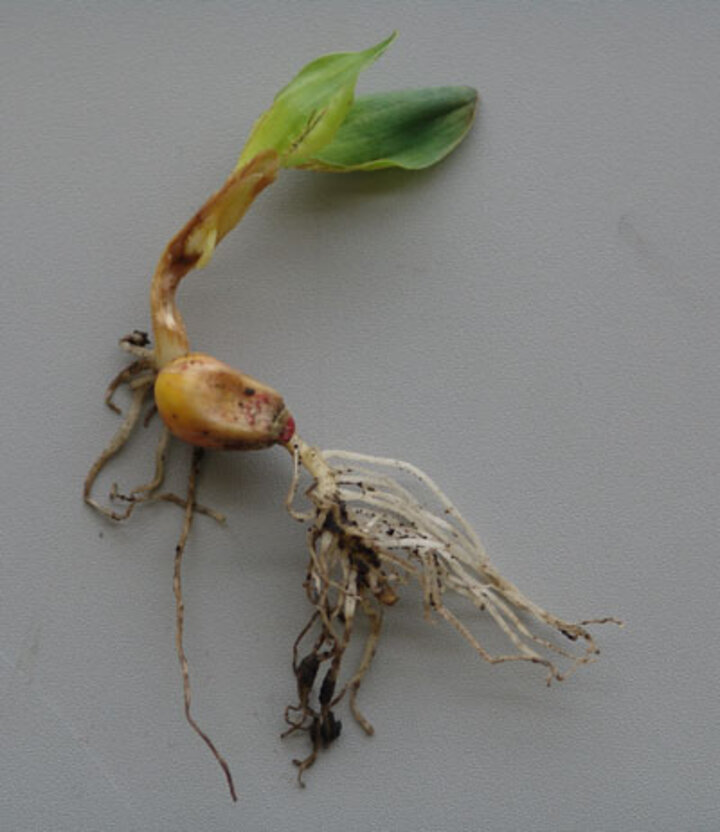
|
| Figure 1. Post emergence seedling corn damping off. |

|
| Figure 2. Corn seedling with discoloration and lesions. |
May 11, 2007
Recent weather conditions are conducive to seedling diseases, particularly those caused by Pythium and Phytophthora. Pathogens in both of these groups are favored by cool weather and require wet soil conditions to produce their motile zoospores, which can swim toward plant roots to infect.
Although Phytophthora diseases in Nebraska are mainly a concern on soybean, Pythium diseases occur in soybean, as well as corn and sorghum. In fact, as many as 14 species of Pythium can infect corn, some of which can also infect soybean and sorghum.
Systemic seed treatment fungicides that contain mefenoxam or metalaxyl provide short-term control of Pythium diseases in seedlings. Currently, more than 90% of corn seed and about half of soybean seed are treated with fungicides, some of which are a combination of products that include one of these compounds. Unfortunately, there is no known plant resistance to Pythium diseases and there are no rescue treatments that are economical for use in most Nebraska crops. However, Pythium damage can be minimized by improving drainage in some lower lying fields and planting in warmer soil.
Diagnosis of seedling diseases can be difficult because several of them cause similar symptoms, such as stunting and chlorosis (yellowing) of upper plant parts, pre- or post-emergence seedling death (also called damping off) and discolored or rotted roots (Figures 1 and 2). You can look for an additional symptom often accompanying Pythium infection by pulling gently on a discolored root. If the outer part of the root (cortex) slips off of the root leaving the white stele in the center, then Pythium is the likely cause of the disease.
Tamra A. Jackson
Extension Plant Pathologist
